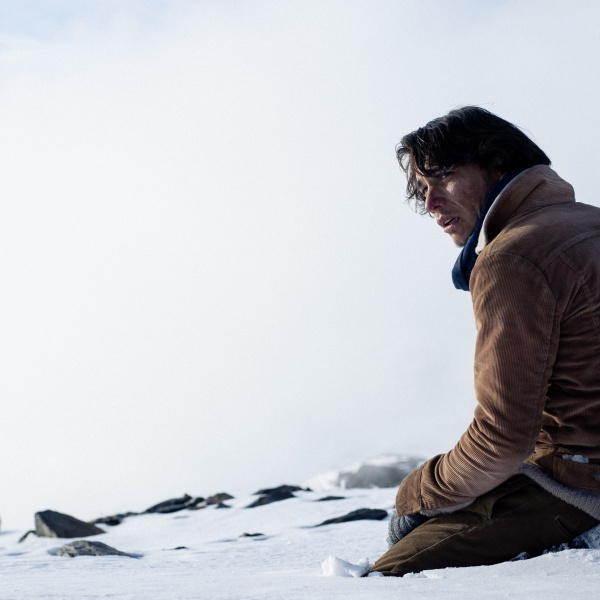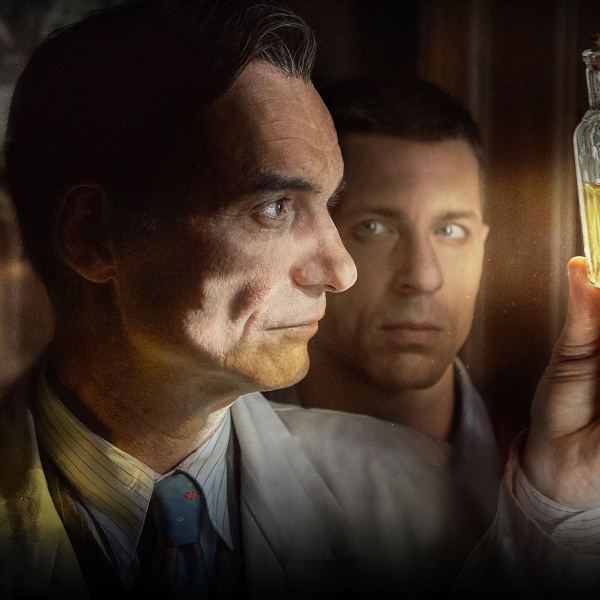
Universal has gone out of its way to market the unfortunately dour “Dream House” as a gooseflesh-raising thriller, emphasizing a pair of ghostly girls and positioning them on a decaying staircase in an image eerily evocative of Stanley Kubrick‘s “The Shining.” The fact that this image is so fleeting that its presence in the movie could easily be counted in the milliseconds didn’t matter to them. After being delayed due to reshoots and nearly every creative principle publicly distancing themselves from the film (including director Jim Sheridan and stars Daniel Craig and Rachel Weisz), they needed to drum up all the sizzle they could for this supernaturally dull misfire. And hey, little ghost kids is as good a way as any.
“Dream House” opens in Manhattan, where we meet publishing executive Will Atenton (Craig), who is leaving to work on his new novel and spend more times with his adorable wife Libby (Weisz) and their two apple-cheeked young daughters (Taylor Geare and Claire Geare) in his titular Fairfield County, Connecticut, home (in actuality Toronto, Ontario which would be a considerably longer commute). Very, very, very slowly some things that could be loosely construed as spooky start happening – a shadowy figure is seen outside their home, mysterious footprints are left in the snow, and a small coven of gothic teens conduct séances in his unfinished basement.

Will starts hearing rumors about a murder happening in the house his family has just moved into, but his neighbor across the street, Ann (Naomi Watts) isn’t talking, and his casual investigation around town turns up similarly limited results. Eventually, after a bunch of pointless story beats, the convoluted twist the movie is built to sustain (even though it’s given away in the trailers) blooms – it turns out Will is the suspected murderer of his family, recently released after a five-year spell in a mental institution. At this moment, instead of a well-manicured suburbanite, Craig appears gruffer and more dangerous, grey stubble peppering his jaw-line and clothes resembling those hobos they took pictures of near the train yard just outside Dealey Plaza on the day JFK was killed.
This revelation, as telegraphed and obvious as it is, could have offered up a number of intriguing possibilities. Craig (now under his assumed psychopath guise of Peter Ward) is haunted by his dead family, a spiritual/supernatural manifestation of his own guilt, and the possibility arises of a kind of ghostly “Source Code,” with the character repeatedly revisiting his own misdeed in an effort to atone for his past transgressions. But he can’t remember actually killing his family, so instead of something more thoughtful, we get a half-assed murder mystery, infrequently interspersed with uncreative dream sequences as painfully inane as they are pointless.
The more “Dream House” goes on, the less sense it makes and the more bored and irritated you will become. Craig, for all his earnest scowling (his steely blue eyes looking like pools of moonlit mercury), can’t bring sincere severity to an unapologetically silly script (by David Loucka) that doesn’t even try to be scary or funny or interesting. Lord only knows what Sheridan, known for humanist dramas like “In America,” thought he could do with this material, but it’s easy to see how it could have gotten out of hand – he didn’t want to rely on the cheapy genre movie staples without understanding why those genre movie staples still work so well, so instead the producers forcibly inserted what they thought the movie needed (like the ghostly girls). What’s even more confusing than the plot of the movie is its look. It was shot by the usually stellar Caleb Deschanel (Zooey’s father) in an unadorned manner far too straightforward for a film that largely takes place inside the fanciful headspace of an assumed mass murderer. In the end, it’s all just a soupy, ugly mess.
Eventually the villain is revealed, even though you’ll probably have spotted him a half hour earlier, thanks to his endless grumbling and a permanent expression that can only be described as “red herring face.” The other reason why he’s such a quick mark is because the movie has so few characters; his is one of the few with actual dialogue. This all culminates with a laughably goofy climax in which his ghost wife attempts to prevent more murders and Elias Koteas confirms our suspicion that he never, ever turns down a role (and just a hear after his wonderful turn in scary movie triumph “Let Me In“).
The most frightening moment in the entire film (which is a late game contender for the honor of being 2011’s most horrible movie) happened when the too-loud air conditioning system kicked on, rumbling to life during one of the movie’s many prolonged stretches of numbing near-silence. It was positively chilling. [D-]




